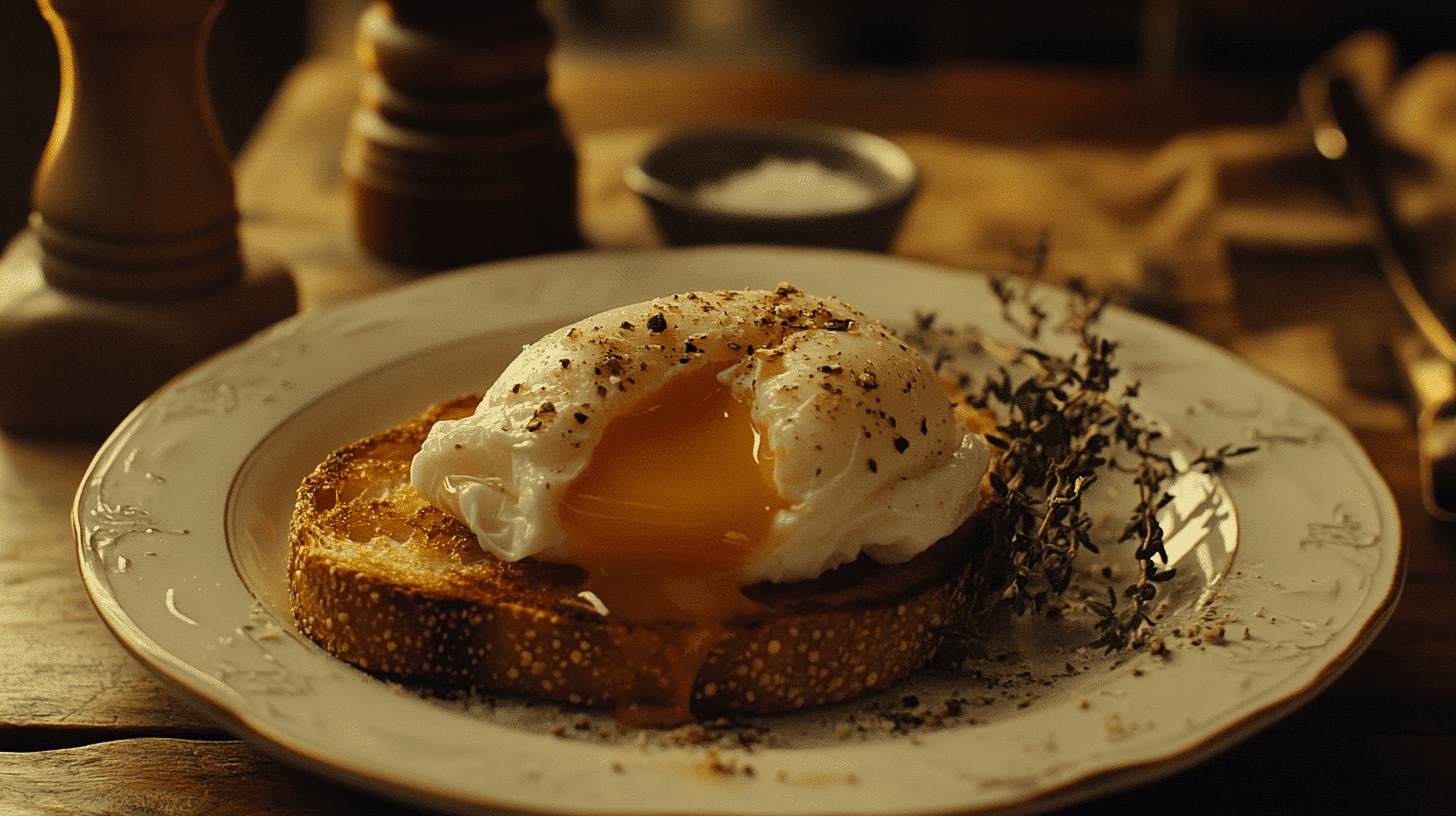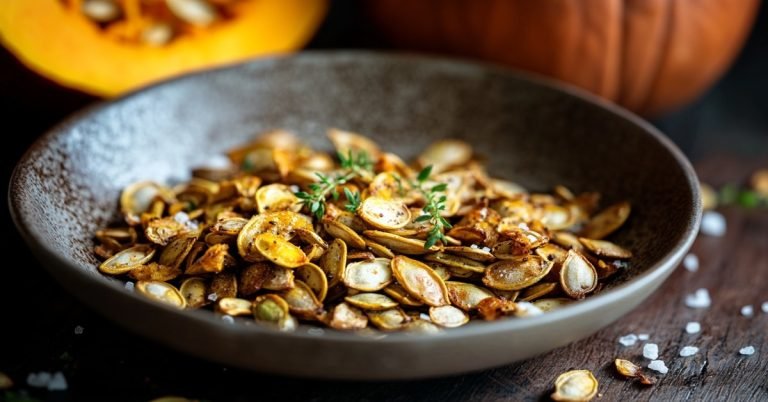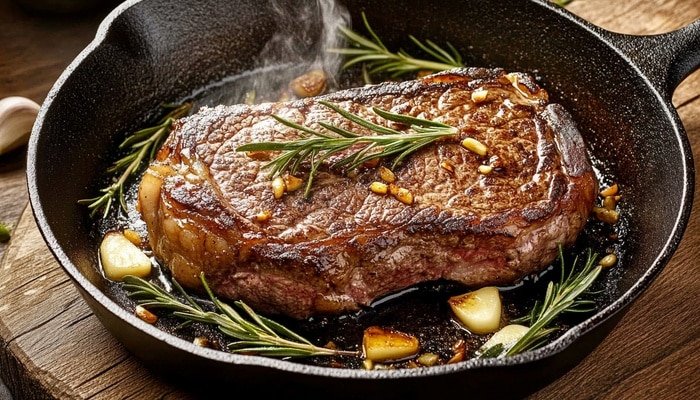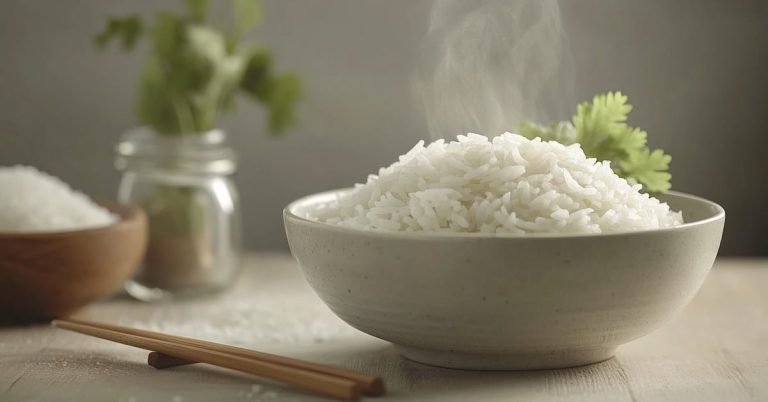To cook the perfect poached egg, begin with the freshest eggs you can find as they have firm whites that maintain shape better. Fill a pot with 3-4 inches of gently simmering water, ideally mixed with a spoonful of vinegar which aids in coagulation of the egg whites. Crack your egg into a bowl and, upon creating a slight vortex in the center of your pot, gently slide the egg in. Let it cook for about three minutes for a beautifully runny yolk. Once done, use a slotted spoon to remove the egg and trim it for a neat appearance. As you get the hang of these steps, the egg puns will start to crack you up!
Understanding the Perfect Poached Egg
When it comes to poaching eggs, the key to success lies in understanding a few simple yet vital points.
First off, egg freshness is essential. Fresh eggs produce tighter whites, giving you that desired round shape. If your eggs aren’t fresh, don’t worry, proper straining will be your savior. Just crack the egg into a sieve to get rid of the loose white.
Then, turn your attention to the vortex method. Stir your water into a whirlpool before dropping in the egg. This helps maintain a neat, compact shape. A spoonful of vinegar will enhance this effect by coagulating the egg white.
Lastly, don’t shy away from a little shape trimming post-poach to achieve that restaurant-style perfection.
Preparing Your Eggs for Poaching
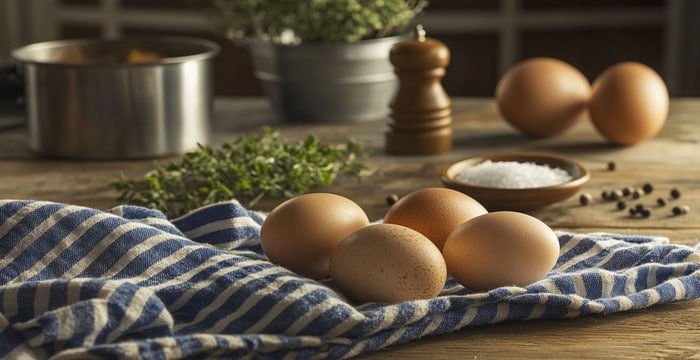
Diving into the cooking process, your first task is to prepare the eggs for poaching. Here, egg freshness is vital. The fresher the eggs, the less runny white you’ll have to deal with, resulting in a neater poached egg.
To rid your eggs of the excess runny white, crack them into a fine mesh sieve and give it a gentle swirl. Next, transfer your egg to a small bowl, ready for poaching.
Got more eggs to poach later? Prep an ice water bath to halt the cooking process.
Now, let’s talk about the vinegar method and the vortex technique. A tablespoon of vinegar in your poaching water helps to coagulate the egg whites. And creating a vortex before adding your egg? That’s a ticket to a beautifully shaped poached egg.
The Right Water Temperature and Depth
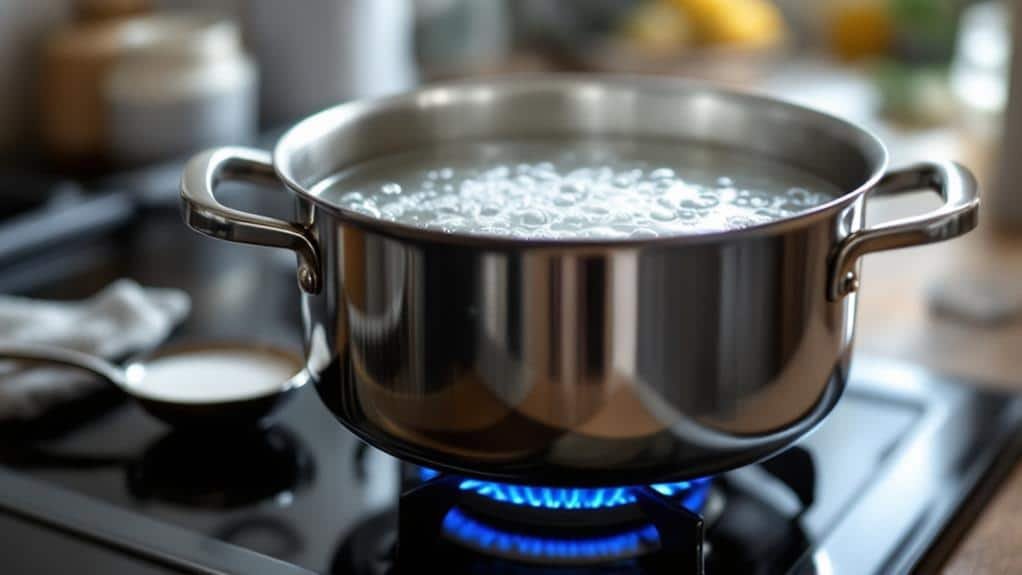
Mastering the right water temperature and depth is the key to achieving the perfect poached egg. You’re looking for a pot filled with three to four inches of water. Too shallow, and your egg resembles a fried one more than a poached delight.
Heat the water until it’s gently simmering. As for the eggs, freshness is essential. Fresh eggs give you the round shape you’re aiming for and a firmer consistency. Adopt the egg straining technique to eliminate loose whites, contributing to a neater finish.
Drop the strained egg into the simmering water and let it work its magic. After a few minutes, rescue your creation using a slotted spoon. Voila! A perfectly poached egg.
The Role of Salt and Vinegar
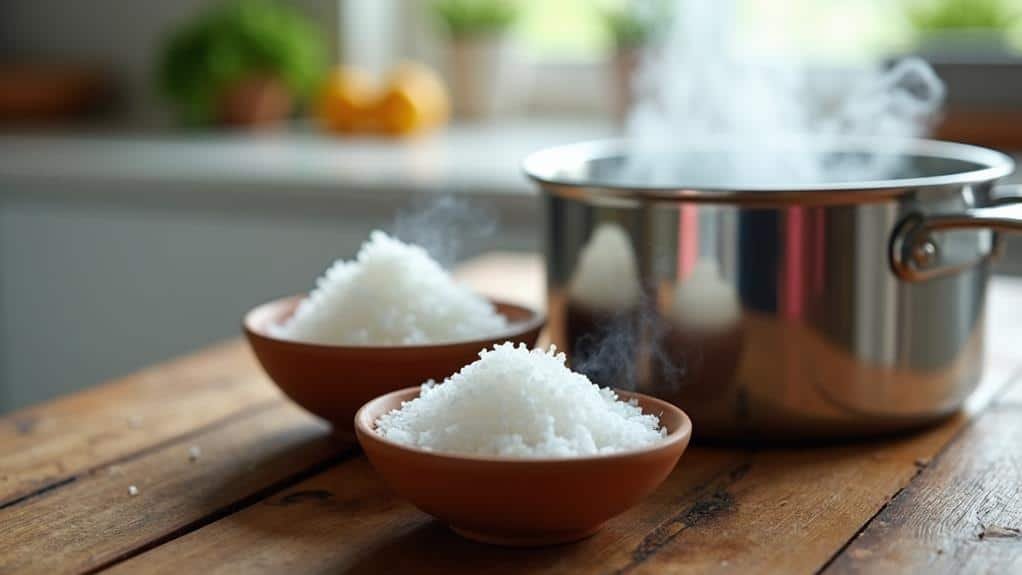
You might be wondering about the role of salt and vinegar in the poaching process. Well, let’s clear up the salt controversy first. Despite popular belief, adding salt to your poaching water isn’t beneficial. It alters water density, causing your egg to splay out and form those unwanted wispies. So, skip the salt!
Now, onto vinegar benefits. Vinegar helps egg whites coagulate, maintaining that desired shape during cooking. Fearful of a vinegar-tasting egg? Don’t be. A tablespoon or two won’t impact the flavor. Remember, egg freshness is key. The fresher the egg, the better it holds its shape.
Ultimately, consider your water depth. Aim for three to four inches—a shallow depth could lead to a flatter poached egg.
The Poaching Process and Final Touches
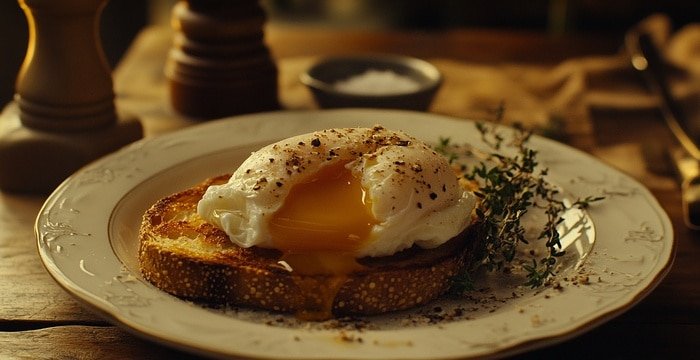
Having debunked a few myths surrounding the use of salt and vinegar in the poaching process, we’re now ready to tackle the actual process of poaching your eggs and adding those final touches.
The first of the cooking techniques you need to master is the vortex method. Swirl your water into a whirlpool before sliding in your egg. This helps achieve those desired poached egg shapes. Remember, egg freshness is vital; the fresher the egg, the better the shape and less wispy the whites.
Cook for three minutes for the perfect yolk consistency. Finally, a pro tip: if you’re making a batch, an ice-water bath stops the cooking process, preserving that perfect yolk for when you’re ready to serve.
Frequently Asked Questions
Can I Use a Poached Egg in Any Recipe That Calls for a Boiled Egg?
You can substitute a poached egg in recipes calling for boiled ones. They’ll add a creamy richness. Just make sure the dish’s flavor pairs well with a runny yolk. Experiment and create appetizing presentations. Happy cooking!
Are the Nutritional Benefits of a Poached Egg the Same as a Hard-Boiled Egg?
Yes, the nutritional benefits of a poached egg are similar to a hard-boiled egg. Differences in cooking methods don’t impact the egg’s nutritional value greatly. So, enjoy your egg poached or boiled as you prefer!
How Long Can I Store Poached Eggs in the Fridge Before They Go Bad?
You can store poached eggs in the fridge for up to 5 days. Just guarantee proper storage in airtight containers. Check for freshness before consumption. Remember, food safety is paramount, so when in doubt, throw it out.
What Are Some Easy Recipes That Incorporate Poached Eggs for Beginners?
You can easily incorporate poached eggs into beginner-friendly recipes. Try adding them to breakfast burritos, avocado toast, or a Cobb salad. More adventurous? Go for eggs Benedict or a flavorful Shakshuka. Enjoy!
Can I Poach Eggs Without Vinegar if I Dont Have Any at Home?
You can poach eggs without vinegar. It just helps the egg whites coagulate faster. If you don’t have vinegar, just swirl the water to help the whites wrap around the yolk. Practice makes perfect!
Conclusion
So, you’ve initiated on this epic culinary journey, navigated the choppy waters of the poaching process, and emerged victorious! Now, with the power to prepare the perfect poached egg, your breakfasts will ascend to unparalleled heights of deliciousness. Remember, practice makes perfect, so don’t be disheartened by initial mishaps. Keep refining your techniques, and soon, you’ll be serving up poached eggs that would make a seasoned chef green with envy. Now, get cracking and let the poaching begin!

